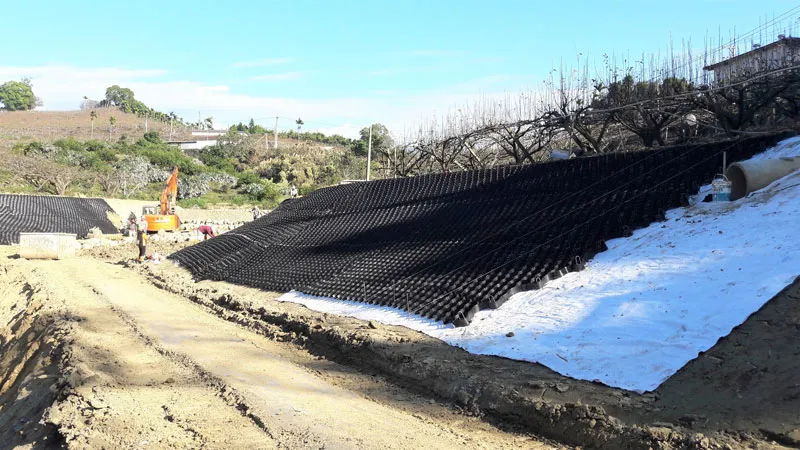
Geotextile has been used successfully on numerous occasions to stabilize steep slope in residual soil and weathered rock. Geotextile was used as tensile reinforcement and filter to stabilize slopes or embankments.
The geotextile is usually placed in horizontal layers within the slope. It is placed along with the slope cutting across potential sliding surfaces in the soil. The geotextile will reduce the pore water pressure within the slopes during the rainy season, thereby increasing the shear strength. The geotextile also acts as a filter that prevents the migration of soil or sometimes called the internal erosion within the slope. Last but not least, the geotextile reinforces the soil along potential sliding zones or planes. All these will increase the stability of the slope.
Many factors are attributing to the selection of geotextile in geotechnical engineering. The first fundamental reason is that there is a need for membrane-like materials because geotechnical structures are built with granular materials; the integrity of layers of granular soils can be disrupted by erosion, settlements and earthquakes while a geotextile layer remains continuous. Besides, geotextile is bi-dimensional and flexible materials and is well-suited to geotechnical structures subjected to different movements. Geotextiles are also useful, either as an interface between layers or as a liner or protection at the surface of the mass geotechnical structures. In addition to the factors mentioned above, geotextiles have been successful because manufacturers have aggressively developed and marketed them, and because contractors, designers and owners have elected to use them. Reasons attributing to the selection of geotextile application in geotechnical engineering by contractors, designers and owners.


